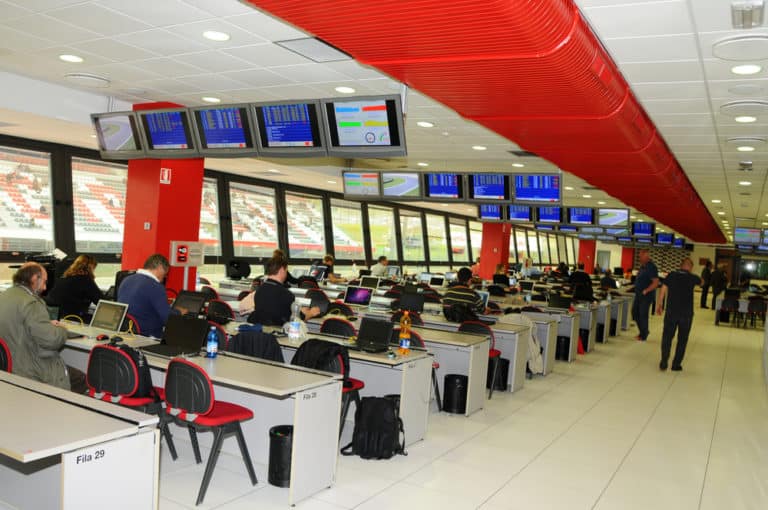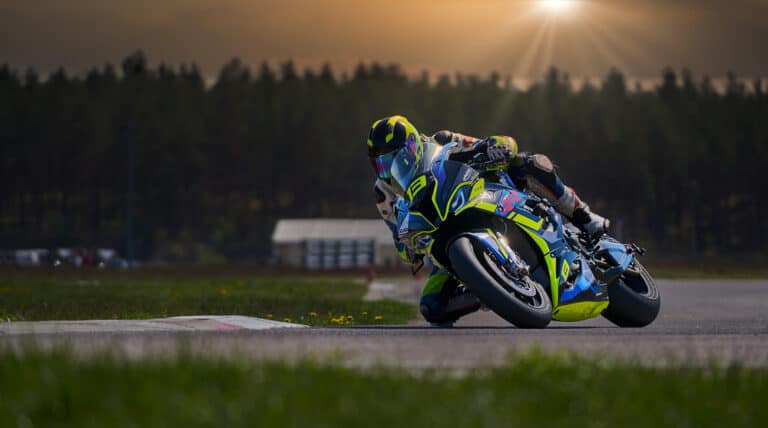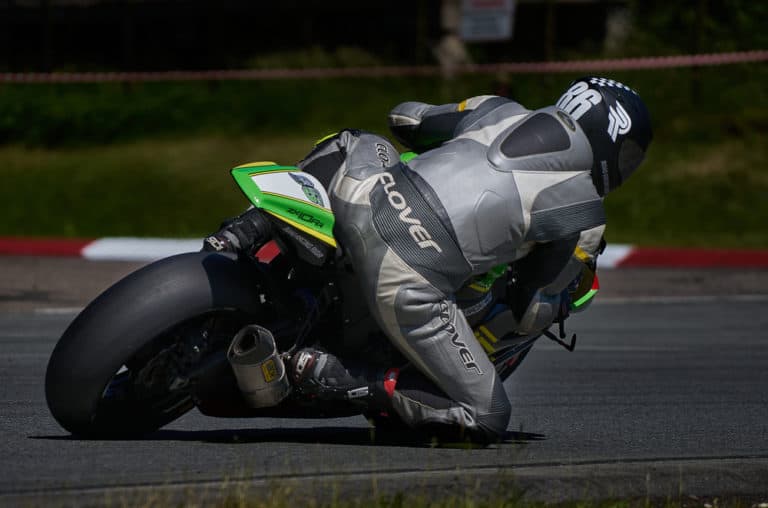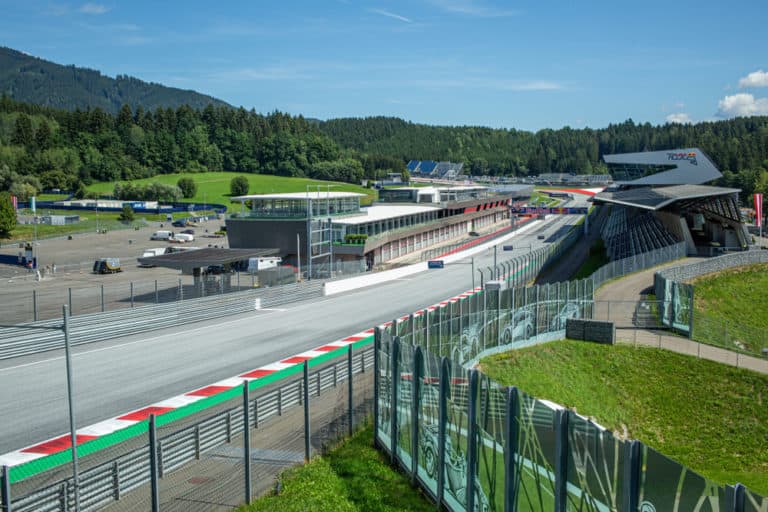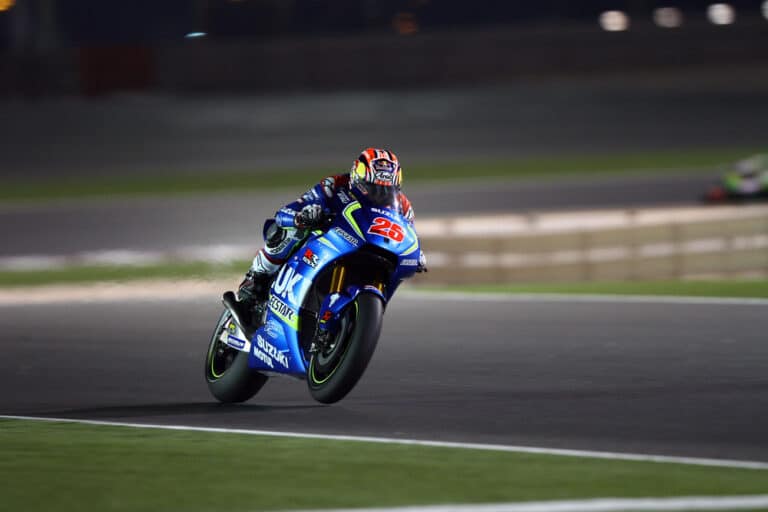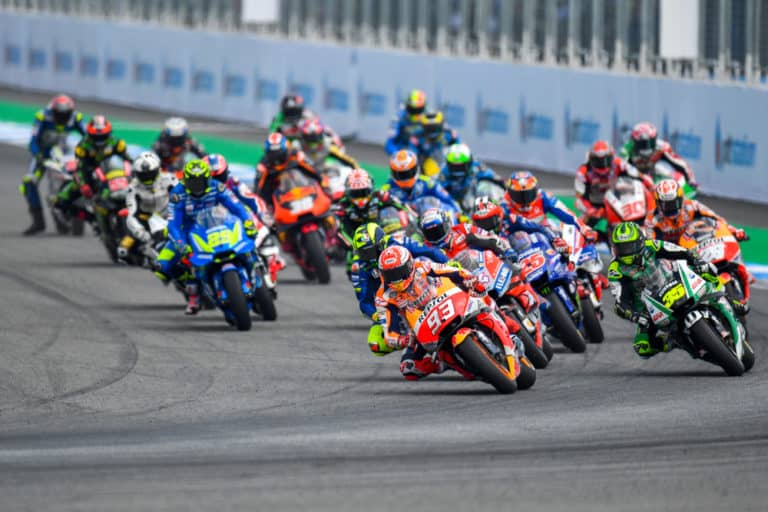Editorial credit: BRICOFFICIAL / Shutterstock.com
Have you ever watched a MotoGP race and considered what levels of fitness riders need to maintain to achieve success? Going into a corner, they may experience a change in forces equivalent to 3.4g (3.4 times their normal body weight) through approximately 240 corners throughout a race.
MotoGP riders expose their bodies to the most crushing forces while they race around a track weekly during each annual season of twenty races, practices, and qualifying sessions. The need to maintain to keep their body weight controlled with a strong and resilient core is essential.
For a MotoGP rider to perform at the extreme levels needed at this level of motorcycle race needs a level of dedication not required in most other motor racing disciplines. Their bodies must withstand excessive forces (interspersed with some accidents), and they must keep their mental acuity operating at its peak for the whole season.
MotoGP Riders Training Routine
Like F1 drivers, MotoGP riders are not just skilled in the way in which they ride, but they are also supremely fit athletes.
While the bikes represent the latest “bleeding edge” technology, the human factor (rider) makes the difference in the final analysis.
To perform at these levels, riders need to exhibit the following characteristics.
The driver-athlete has well-defined characteristics:
- A superior body composition, where the rider’s weight is at optimum levels, and no excess is carried onto the bike.
- High levels of dynamic and isometric strength, with an ability to recover stability, help the rider control the bike through all regimes of a course.
- Flexible joints and no stiffness which allow the rider to change position and move across the bike, particularly while cornering
- High levels of cardiovascular fitness keep the rider able to cope with the sheer physicality demands in a race and stay alert while resisting fatigue, particularly as they relate to the metabolic and emotional aspects of racing.
Before and during a season, riders break down the training requirements into pre seas and during-season training.
Preseason Training of MotoGP Riders
During the preseason training, the riders start from approximately December of the previous year.
The riders will concentrate on cardio exercises to increase their fitness, strength, and stamina.
The commitment is absolute, and most riders will train for up to six hours per day, six days a week. This training will concentrate on the following.
- Weight training.
- Use of fitness machines.
- The rider will spend a large part of the training routine performing isokinetic exercises.
In Season Training For MotoGP Riders
During the MotoGP season, the rider’s training routine becomes more specific.
They will concentrate on building and maintaining endurance, strength, and muscle volume to cope with the extreme stresses imposed on their bodies during the racing season.
Each rider will focus on exercises that enhance areas more related to riding skills than other physical strengths.
Riders will use the following equipment on tour.
- 8/10 kg dumbbell
- 10/12 kg kettlebell
- Fitball
- Mat.
A typical routine will involve the following exercises.
- Warm Up
- Side Lunge with Kettlebell Lift
- Fitball Twist
MotoGP Riders Warm Up Training Routine
MotoGP riders often warm up with a marching routine interspersed with the following exercises every ten feet.
- High Kicks
- Lunge With A Twist
- Knee To Chest
- opposite knee pull
- Bent Knee Lateral Swing
- Single Leg Deadlift
Raider Plank For MotoGP Riders
To perform Raider Plank, carry out the following
- Place your hands on the ground and your feet on the ground, lift one leg sidewards at 90 degrees, and place it on a chair or box next to your body.
- Lift the other knee off the ground so your body is supported by your two hands and the bent leg on the chairs.
- For three minutes, hold this position and then switch to the other side.
- Perform four sets of eight repetitions.
- Rest at the end of each set.
Quadruped Row On Bench For MotoGP Riders
To perform the Quadruped Row On Bench, carry out the following.
- Kneel on a bench, box, bed, or sofa
- Lean forward and hold a kettlebell in your left hand.
- Stretch the right leg behind your body, so it is not supported.
- Slowly lift the kettlebell up to your body height with your right hand providing stability.
- Perform four sets of ten repetitions on each side.
- Ensure that you have one-minute rest between the sets.
Side Lunge With Kettlebell Lift For MotoGP Riders
The Side Lunge With Kettlebell Lift is performed in the following manner.
- Stand with your legs apart and lunge sideways with your right leg straight out and your left leg bent at the knee.
- Hold your left arm straight out behind you for balance
- With a kettlebell placed on the floor in front of you, and with your right-hand grab hold of the kettlebell
- Always rest for at least sixty seconds between repetitions.
Fitball Twist For MotoGP Riders
To perform this exercise,
- Place your hands on the ground while you are in a prone position.
- Place both feet on the Fitball while keeping your knees and hips flexed.
- Rotate your hips to each side while keeping your legs on the ball and maintaining your balance.
- If you want to step up the exercise, you can place your hands on a second ball instead of the ground.
- Complete four sets of ten reps alternating on each side of your body
Training For MotoGP Riders During The Summer Break
The month-long summer break occurs in the middle of the MotoGP season, when the riders may be tiring and feeling the stresses and strains imposed on the during eh first half of the season.
During the summer break, most riders reduce the training regime slightly to enable the riders’ bodies a period of respite.
To break the routine, most riders also participate in other high cardio sports such as badminton, squash, basketball, and football to maintain their cardio fitness.
Towards the end of the summer break, the riders will ramp up their daily training routine back to the levels undertaken during the preseason sessions.
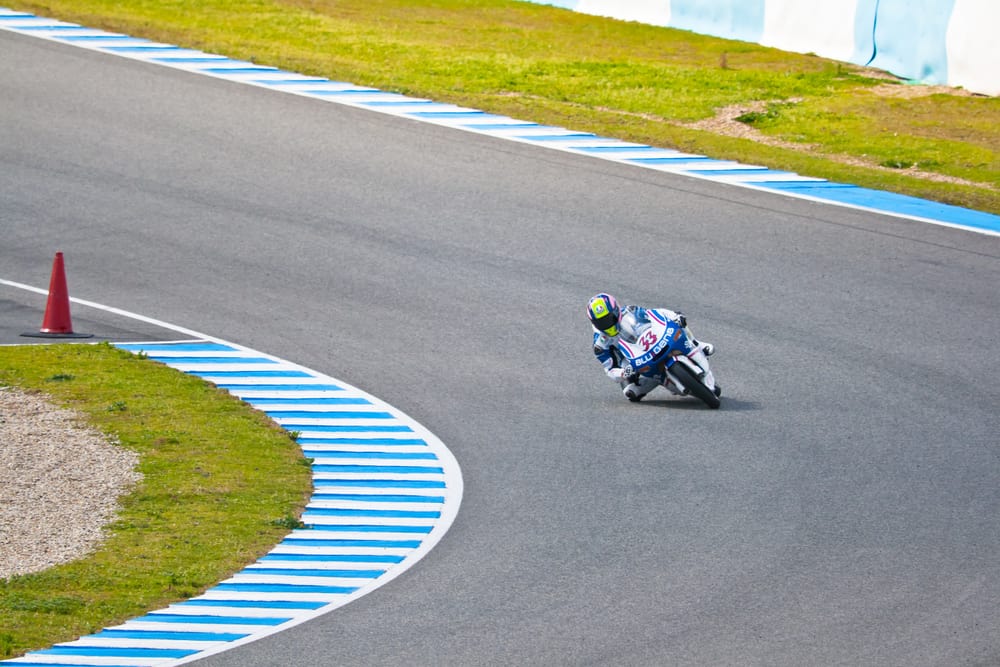
Why Do MotoGP Riders Need To Be So Fit?
The forces which MotoGP riders impose on their bodies are extreme.
The weight which is carried around a MotoGP track is as follows.
- Riders weigh approximately 147 lbs. (67 kg).
- The rider’s gear weighs 24 lbs. (11 kg).
- At the start of the race, 22 liters of fuel were in the tanks, weighing 27 lbs. (17 kg).
- The bike weighs 346 lbs. (156 kg).
- That makes a total approaching 544 lbs. (255 kgs).
Braking into a corner, the riders experience negative g-force figures of 2g above and then positive G-forces of up to 1.4G as they accelerate to 100km/h in 2.6 seconds and then on to 210 mph (350km/h), which they can reach in 11 seconds.
When the rider is braking at negative g-force figures of 2g above, the total bike rider package weighs in at over 1,000 lbs. (500 kg), and as they accelerate away at 1.4g, the total change from negative to positive g’s is 3.4g.which is a weight change of approximately ¾ ton.
They repeat these deceleration and acceleration forces at each corner and subsequent straight.
Some circuits have thirteen or more corners, and in races lasting twenty-plus laps, the strength required from the riders is extreme.
On a circuit like Valencia, riders will brake and accelerate more than 240 times during one race.
These are the normal forces riders face; however, they become much more extreme during an accident. Loris Baz crashed on the straight at Sepang during the 2016 preseason testing session, resulting in an impact of 29.9G on his shoulder when he hit the ground.
To experience these forces, race after race, including during the practice sessions over a season of twenty race weekends, requires high levels of strength and fitness.
Conclusion
While each MotoGP rider has their training routine, they will all try to increase dynamic and isometric strength, joint flexibility, cardiovascular fitness, maintaining concentration, and high levels of strategic and tactical planning.

